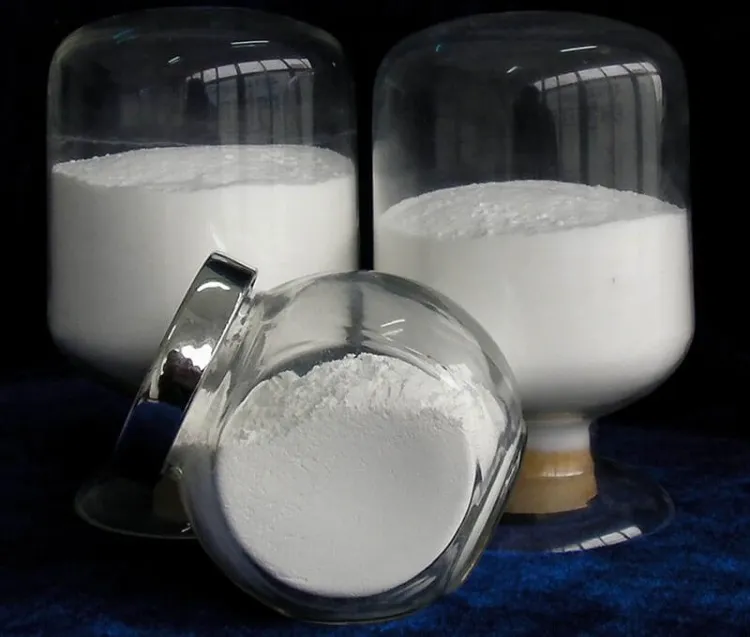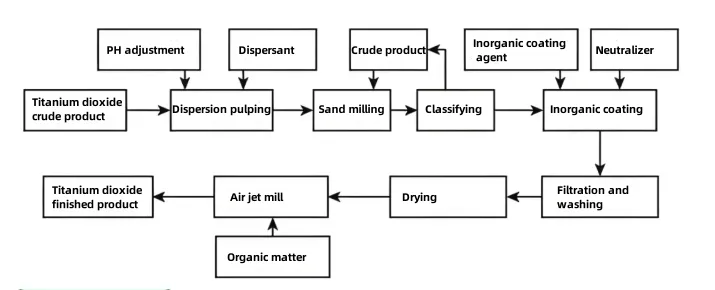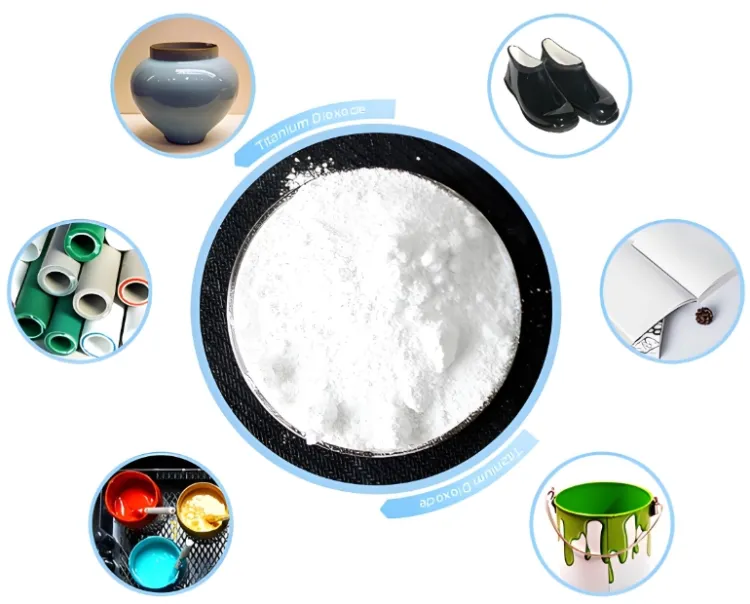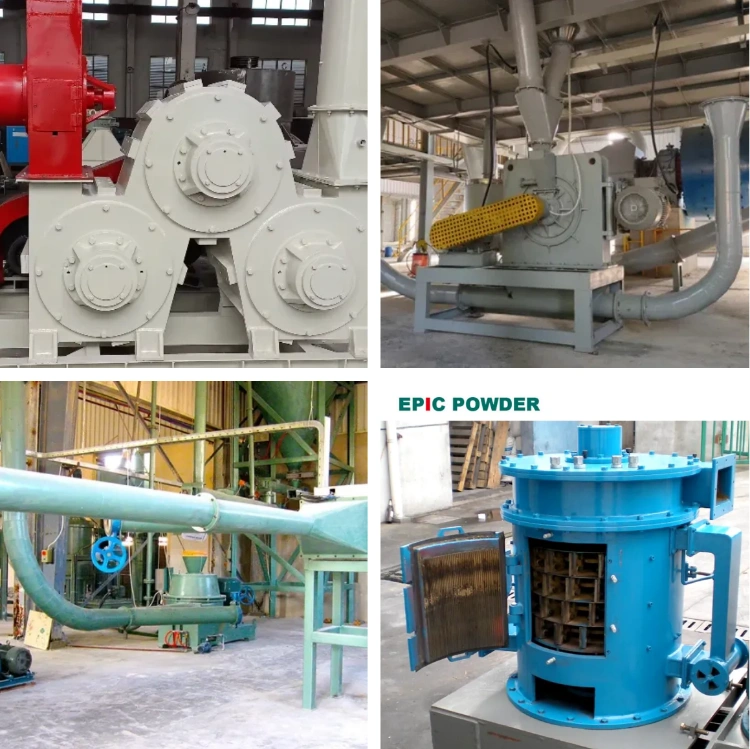IL modifica del rivestimento Di biossido di titanio (TiO₂) è un metodo importante per migliorare le sue proprietà, come la dispersione, la resistenza agli agenti atmosferici, la lucentezza e chimico stabilità. Attraverso il biossido di titanio rivestimento Grazie a questa modifica, le prestazioni del TiO₂ possono essere significativamente migliorate per diverse applicazioni industriali. I metodi di rivestimento comuni si dividono principalmente in tre categorie: rivestimento inorganico, rivestimento organico e rivestimento composito. Di seguito viene fornita una classificazione specifica e una breve introduzione di questi metodi di modifica del rivestimento in biossido di titanio, evidenziandone i vantaggi unici per diverse applicazioni.

Modifica del rivestimento inorganico
Di rivestimento Uno strato di ossidi o sali inorganici sulla superficie delle particelle di biossido di titanio forma una barriera fisica che ne migliora la stabilità chimica e le proprietà ottiche.

Rivestimento di ossido
Principio: Gli idrati di ossido metallico (ad esempio SiO₂, Al₂O₃, ZrO₂) precipitano sulla superficie di TiO₂ formando uno strato di rivestimento uniforme.
Tipi comuni:
- Rivestimento in silice (SiO₂): Migliora la dispersione e la resistenza agli agenti atmosferici, riduce l'agglomerazione, utilizzato nei rivestimenti e nelle materie plastiche.
- Rivestimento in allumina (Al₂O₃): Migliora la polarità superficiale, migliora la compatibilità con le matrici organiche, aumenta la lucentezza e la resistenza chimica.
- Rivestimento in zirconia (ZrO₂): Migliora la resistenza alle alte temperature e all'usura, adatto per rivestimenti e ceramiche ad alte prestazioni.
Processo: I sali metallici (ad esempio silicato di sodio, solfato di alluminio) vengono aggiunti alla sospensione di TiO₂, regolando il pH per precipitare gli idrati di ossido metallico.
Rivestimento in ossido composito
Principio: Il rivestimento con due o più ossidi metallici (ad esempio, Al₂O₃-SiO₂, ZrO₂-SiO₂) combina i vantaggi di ciascun componente.
Caratteristiche: Offre prestazioni complessive superiori. Ad esempio, il rivestimento Al₂O₃-SiO₂ migliora sia la dispersione che la resistenza agli agenti atmosferici, risultando adatto per vernici per autoveicoli ad alte prestazioni e coil coating.
Rivestimento di sale
Principio: I sali metallici (ad esempio fosfati, silicati, solfati) formano strati di sale insolubili sulla superficie di TiO₂.
Tipi comuni:
- Rivestimento di fosfato di alluminio: Migliora la resistenza agli agenti atmosferici e la capacità antipolvere, comunemente utilizzato nei rivestimenti per esterni.
- Rivestimento di solfato di zinco: Migliora le proprietà della carica superficiale, riduce l'agglomerazione e aumenta la dispersione.
Modifica del rivestimento organico
Attraverso la reazione dei composti organici con i gruppi idrossilici sulla superficie del biossido di titanio, si forma uno strato molecolare organico che ne migliora la compatibilità con i supporti organici.
Rivestimento dell'agente di accoppiamento
Principio: Le molecole degli agenti accoppianti (ad esempio silani, titanati, alluminati) hanno una struttura anfifilica, con un'estremità che si lega ai gruppi idrossilici TiO₂ e l'altra che reagisce con matrici organiche (ad esempio resine, polimeri).
Funzione:
- Agenti accoppianti silanici: Migliora la dispersione di TiO₂ nei sistemi acquosi, comunemente utilizzato nei rivestimenti e negli inchiostri a base d'acqua.
- Agenti di accoppiamento titanato/alluminato: Migliora la compatibilità nei sistemi oleosi come materie plastiche e gomme, riducendo l'agglomerazione durante la lavorazione.
Rivestimento tensioattivo
Principio: I tensioattivi (ad esempio acidi grassi, solfonati, sali di ammonio quaternario) si attaccano alla superficie di TiO₂ tramite adsorbimento fisico o reazioni chimiche, formando una carica o uno strato idrofobico.
Funzione:
- Tensioattivi anionici (ad esempio acido stearico): Migliora la dispersione in mezzi oleosi, comunemente utilizzato nella plastica e nella gomma.
- Tensioattivi cationici (ad esempio, cloruro di dodeciltrimetilammonio): Adatto ai sistemi polari, migliorandone la stabilità.
Rivestimento polimerico
Principio: L'innesto di polimeri (ad esempio acrilati, resine epossidiche, silossani) viene ottenuto tramite reazioni di polimerizzazione sulla superficie di TiO₂.
Funzione: Forma uno spesso strato di rivestimento, isolando ulteriormente la corrosione chimica, migliorando la resistenza agli agenti atmosferici e le proprietà meccaniche. Migliora la compatibilità con resine specifiche, adatto per compositi e rivestimenti ad alte prestazioni.
Rivestimento in silicone
Principio: I poliorganosilossani (ad esempio siliconi, resine siliconiche) rivestono le particelle di TiO₂ grazie alle loro proprietà di bassa energia superficiale.
Funzione: Riduce la tensione superficiale, migliora la dispersione e la scorrevolezza, comunemente utilizzato negli inchiostri e nei cosmetici.
Modifica del rivestimento composito
Combinando i vantaggi dei rivestimenti inorganici e organici, il doppio rivestimento viene eseguito in più fasi o simultaneamente per ottenere prestazioni complementari.
Prima il rivestimento inorganico, poi quello organico
Processo: Per prima cosa, si forma una barriera fisica con ossidi inorganici (ad esempio SiO₂), quindi si modifica con agenti accoppianti o polimeri per il miglioramento organico.
Caratteristiche: Bilancia resistenza e compatibilità con gli agenti atmosferici, come nei rivestimenti architettonici ad alta resistenza agli agenti atmosferici o nelle vernici automobilistiche OEM.
Rivestimento sincrono inorganico-organico
Processo: Introdurre simultaneamente rivestimenti inorganici e organici nello stesso sistema di reazione per formare una struttura nucleo-guscio.
Caratteristiche: Gli strati di rivestimento si legano più saldamente, con conseguenti significativi miglioramenti delle prestazioni. Adatto ad applicazioni di fascia alta, come rivestimenti aerospaziali e nanocompositi.
Altre tecnologie di rivestimento speciali
Rivestimento nano
Principio: Utilizzare nanomateriali (ad esempio nano SiO₂, nano ZnO) per il rivestimento, per migliorare la trasparenza e la capacità di schermatura dai raggi UV, comunemente usati nei cosmetici solari e nei rivestimenti ottici.
Rivestimento di microcapsule
Principio: Racchiude le particelle di TiO₂ in microcapsule polimeriche, rilasciandole attraverso il controllo delle condizioni di rottura della capsula (ad esempio, temperatura, pH). Adatto per rivestimenti intelligenti e sistemi a rilascio controllato.
Conclusione
La scelta di modifica del rivestimento in biossido di titanio dovrebbe essere basato sullo scenario applicativo (ad esempio rivestimenti, materie plastiche, inchiostri, cosmetici) e sui requisiti prestazionali (ad esempio resistenza agli agenti atmosferici, dispersione, compatibilità).

Per esempio:
- Rivestimenti per esterni: Per migliorare la resistenza agli agenti atmosferici si preferiscono gli ossidi inorganici (ad esempio Al₂O₃-SiO₂) o i rivestimenti compositi.
- Lavorazione della plastica: Per migliorare le prestazioni di dispersione e di lavorazione si utilizzano agenti accoppianti o tensioattivi.
- Applicazioni di fascia alta: I rivestimenti compositi o nano consentono un'ottimizzazione sinergica multifunzionale.

Polvere epica
Epic Powder, oltre 20 anni di esperienza nel settore delle polveri ultrafini. Promuoviamo attivamente lo sviluppo futuro delle polveri ultrafini, concentrandoci sui processi di frantumazione, macinazione, classificazione e modifica delle polveri ultrafini. Contattateci per una consulenza gratuita e soluzioni personalizzate! Il nostro team di esperti è impegnato a fornire prodotti e servizi di alta qualità per massimizzare il valore della vostra lavorazione delle polveri. Epic Powder: il vostro esperto di fiducia nella lavorazione delle polveri!
